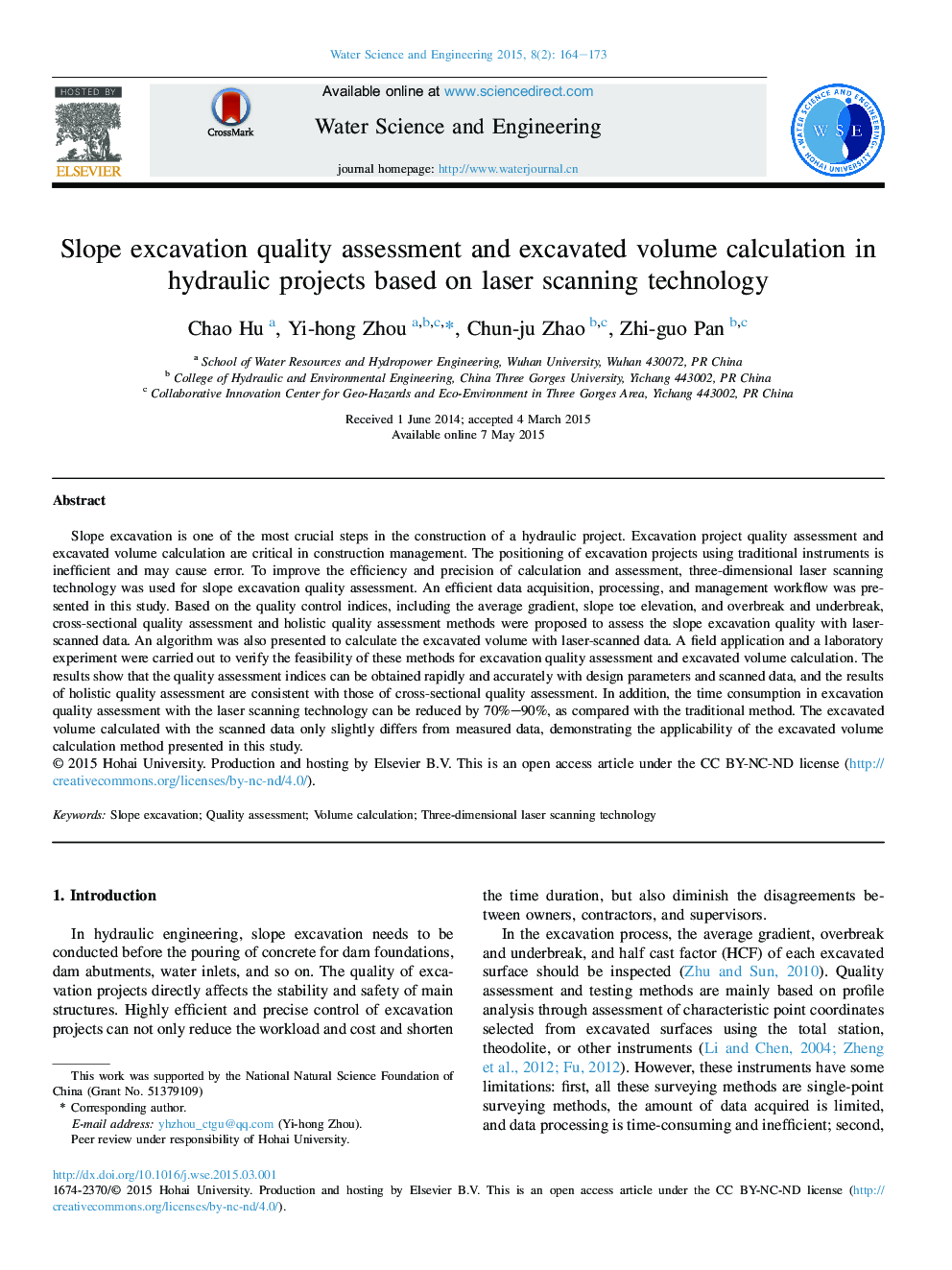| Article ID | Journal | Published Year | Pages | File Type |
|---|---|---|---|---|
| 311437 | Water Science and Engineering | 2015 | 10 Pages |
Slope excavation is one of the most crucial steps in the construction of a hydraulic project. Excavation project quality assessment and excavated volume calculation are critical in construction management. The positioning of excavation projects using traditional instruments is inefficient and may cause error. To improve the efficiency and precision of calculation and assessment, three-dimensional laser scanning technology was used for slope excavation quality assessment. An efficient data acquisition, processing, and management workflow was presented in this study. Based on the quality control indices, including the average gradient, slope toe elevation, and overbreak and underbreak, cross-sectional quality assessment and holistic quality assessment methods were proposed to assess the slope excavation quality with laser-scanned data. An algorithm was also presented to calculate the excavated volume with laser-scanned data. A field application and a laboratory experiment were carried out to verify the feasibility of these methods for excavation quality assessment and excavated volume calculation. The results show that the quality assessment indices can be obtained rapidly and accurately with design parameters and scanned data, and the results of holistic quality assessment are consistent with those of cross-sectional quality assessment. In addition, the time consumption in excavation quality assessment with the laser scanning technology can be reduced by 70%–90%, as compared with the traditional method. The excavated volume calculated with the scanned data only slightly differs from measured data, demonstrating the applicability of the excavated volume calculation method presented in this study.
